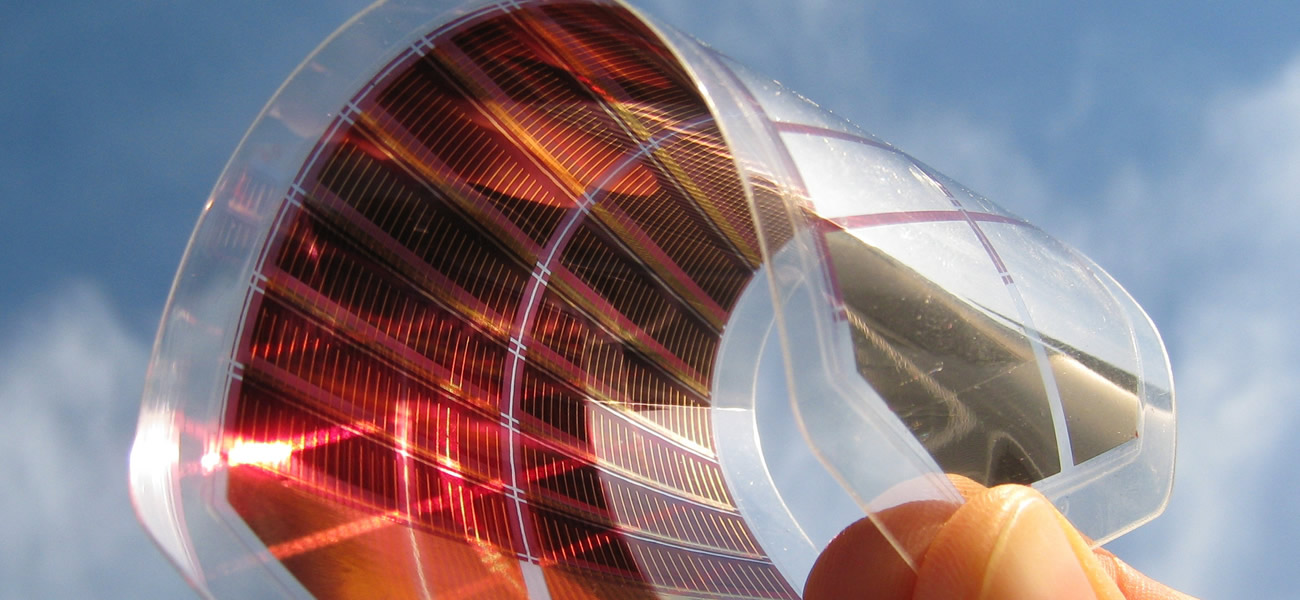Overview of Nanowires for Solar Cell Applications
Nanowires have attracted considerable interest for use in next generation solar cells. Of particular interest are their unusual, tunable optical and electrical properties and the fact that they are solution processible. These properties could allow the fabrication of low cost, high efficiency nanowire solar cells.
A variety of different solar cell architectures have been proposed, but two of the most popular are Quantum Material Sensitized Solar cells (where the material may be dots (QDSSC), rods (QRSSC) or wires (QWSSC)) and hybrid inorganic/polymer solar cells. CdSe nanowires are particularly attractive for solar application due to the fact that they are a direct bandgap semiconductor with good overlap of the solar spectrum, with the band edge extending from 650 to 720 nm depending on the diameter. This allows for the nanowire to serve as a sensitizer in addition to a charge carrier transporter when constructing a nanowire solar cell.
Advantages of Nanowires for Energy Research
Nanowires are of particular interest compared to other nanomaterials due to their asymmetric shape which allows for tuning quantum effects in the short direction (diameter), but retention of bulk properties, such as rapid carrier transport, in the long direction. Nanowires both have a larger volume than quantum dots, and have a higher absorption cross-section than quantum dots (on a volume normalized basis), allowing for more efficient harvesting of light per particle. (1) More efficient harvesting of light is a factor in improving solar cell performance. The higher absorption efficiency also allows for less nanowire to be used in constructing the photovoltaic, leading to a reduction in device cost.
Selected Literature Summaries featuring CdSe Nanowires for Photovoltaics
Yu, Kamat, and Kuno reported a proof of principle CdSe Nanowire/Quantum Dot solar cell with 0.012% efficiency at 1 sun. The quantum dots served to bridge voids between the nanowires, and improved the efficiency 2 fold, over a pure nanowire solar cell.(2)
Studies of nanorods versus quantum dots indicate that increased length of nanorods improve the performance over quantum dots due to increased charge transport in the long direction.(3) Size tuning the diameter of the rod can be used to improve the overall light absorption of the cells- for example, polymer/CdSe NR solar cells based on P3HT (abs < 650 nm) can be enhanced by using “fatter” nanorods (diameter= 7 nm; abs <720 nm). Branched nanomaterials such as tetrapods are also reported to have improved performance over their one-dimensional relatives.(5) Again, longer tetrapods are reported to have better device performance than shorter tetrapods.(3) Certified efficiencies of 3.13% have been reported.(6)
Enable your Solar research with US Nanotechnology
US Nano has intellectual property relating to the industrial scale synthesis of CdSe of straight and branched CdSe available for licensing or joint development opportunities. US Nano also has methods to make large volumes of other semiconductor nanowires that might be useful for nanowire solar cell research. Additionally, US Nano has developed methods to inkjet print nanowires, allowing for the rapid production of fast, cheap, and rugged printed electronic devices such as nanowire solar cells. To understand our workflow for producing printed solar cells, see our Technology page.
Contact us to discuss how we can advance your energy research through licensing or joint development projects.
Selected References on Nanowire Solar Cells
- Protasenko, V.; Bacinello, D.; Kuno, M. Experimental determination of the absorption cross-section and molar extinction coefficient of CdSe and CdTe nanowires. The Journal of Physical Chemistry B 2006, 110, 25322–31.
- Yu, Y.; Kamat, P. V.; Kuno, M. A CdSe Nanowire/Quantum Dot Hybrid Architecture for Improving Solar Cell Performance. Advanced Functional Materials 2010, 20, 1464–1472.
- Lee, K.-S.; Kim, I.; Gullapalli, S.; Wong, M. S.; Jabbour, G. E. Enhanced performance of hybrid solar cells using longer arms of quantum cadmium selenide tetrapods. Applied Physics Letters 2011, 99, 223515.
- Huynh, W. U.; Dittmer, J. J.; Alivisatos, A. P. Hybrid nanorod-polymer solar cells. Science 2002, 295, 2425–7.
- Sun, B.; Marx, E.; Greenham, N. C. Photovoltaic Devices Using Blends of Branched CdSe Nanoparticles and Conjugated Polymers. Nano Letters 2003, 3, 961–963.
- Dayal, S.; Kopidakis, N.; Olson, D. C.; Ginley, D. S.; Rumbles, G. Photovoltaic devices with a low band gap polymer and CdSe nanostructures exceeding 3% efficiency. Nano Letters 2010, 10, 239–42.

